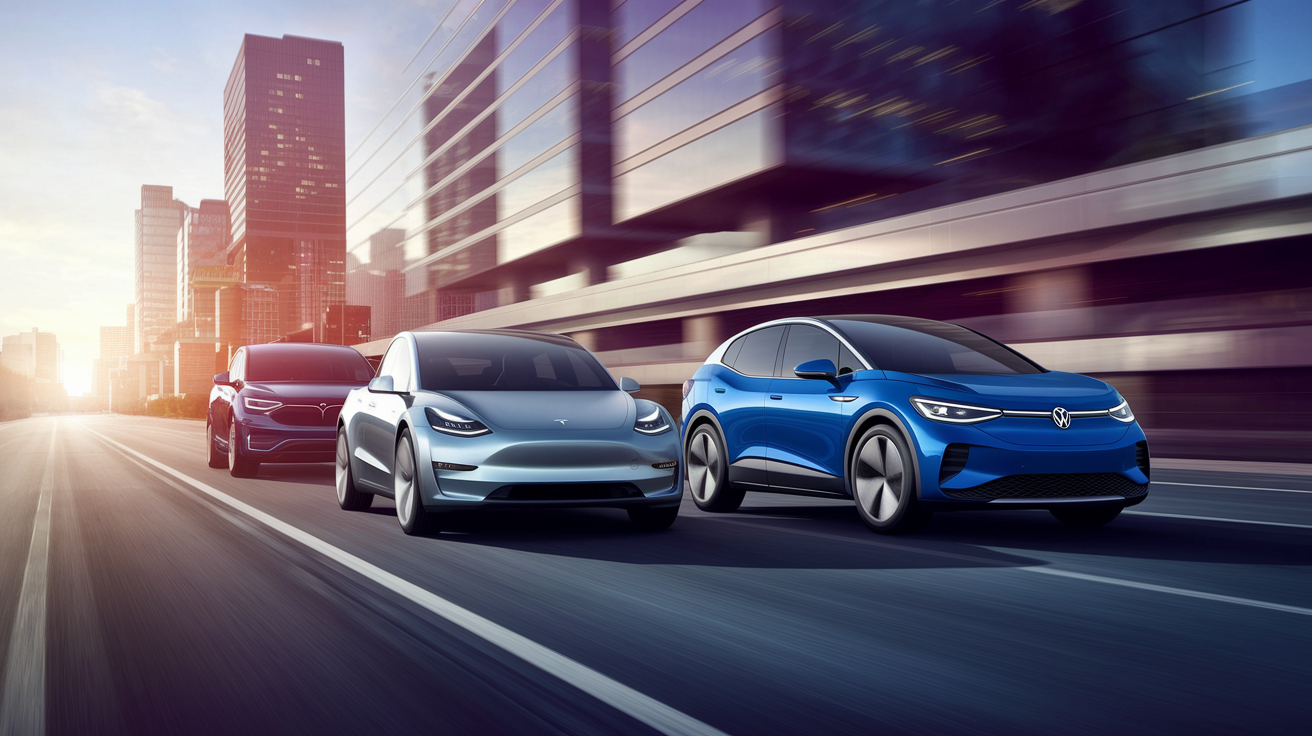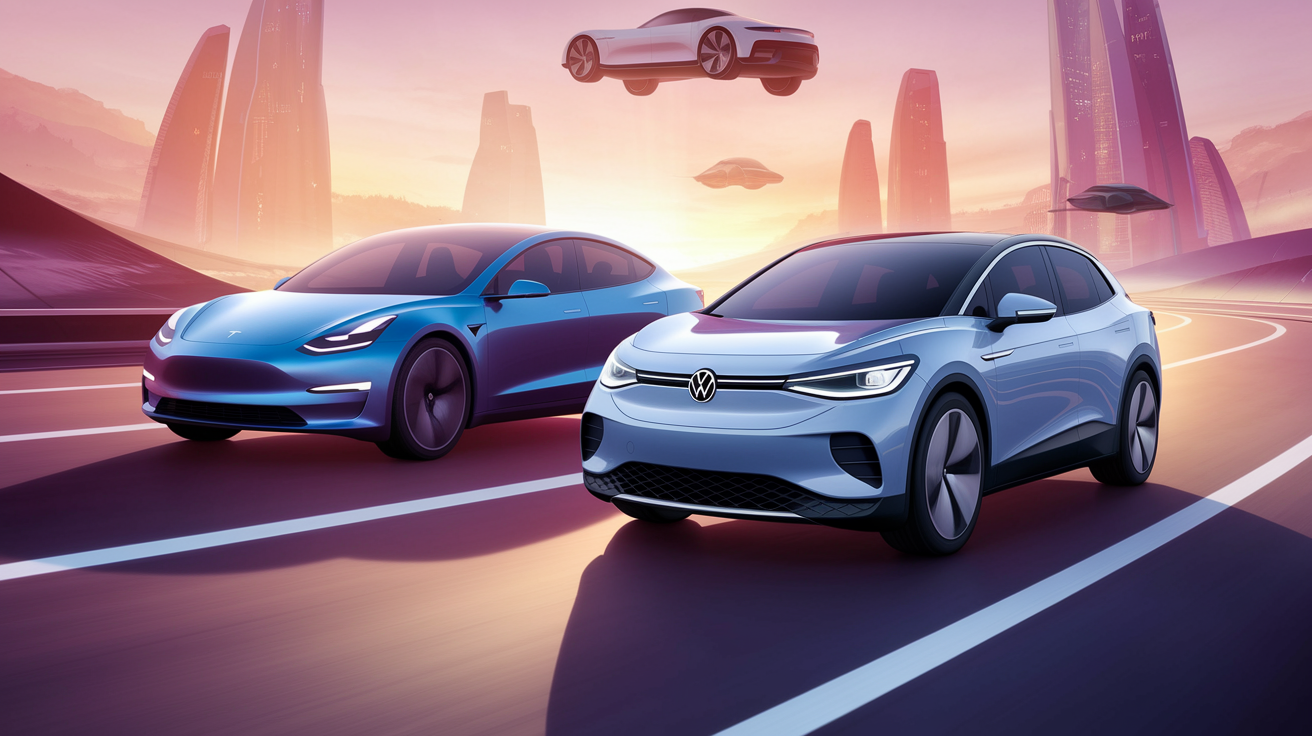In the global race for supremacy in the electric vehicle market, Tesla and Volkswagen face off as two giants in intense competition. Both companies have developed different strategies to tackle the challenges and opportunities of electric mobility. From technological innovations to pricing strategies targeting different market segments, they seek to assert their positions in a rapidly evolving market. This article highlights how their innovation and pricing strategies influence competition and what this means for investors.
Electrifying Visions: Innovation Strategies of Tesla and Volkswagen in the Race Towards the Future

The electric vehicle market is currently characterized by rapid developments and increasing competition. Tesla and Volkswagen are at the center of the stage, with their respective innovation strategies showing significant differences, which shape their positions in the market.
Let’s start by considering Tesla, which is viewed as a pioneer of electric mobility. Tesla’s innovation strategy is based on several pillars: a central focus is autonomous driving. Tesla invests heavily in this future technology, integrating advanced autopilot features into its vehicles. Despite challenges in realizing taxi robot plans, Tesla remains a leader in this field. Another highlight of Tesla is its over-the-air software updates. These allow the company to continuously improve the performance and variety of its vehicles’ features, offering not only flexibility but also a form of security for customers’ future. Additionally, Tesla has developed a comprehensive energy ecosystem that spans from solar installations to storage solutions to a global network of charging stations.
Volkswagen, on the other hand, is tackling the path of massive electrification with determination. By 2030, the group plans to convert over 70% of its sales to electric vehicles. The innovative MEB platform plays a key role in this, ensuring both efficiency in production and flexibility in developing a variety of models. Volkswagen is also aiming for technology partnerships to make progress, especially in autonomous driving and connectivity. Unlike Tesla, Volkswagen places a strong emphasis on sustainable production methods and battery recycling to reduce the ecological impact of producing its vehicles.
The comparison of these strategies shows that Tesla focuses more on technology and usability, while Volkswagen pursues a broader transition towards electric mobility and sustainability. Both approaches present their own opportunities and risks that will evolve in a dynamic market. While Tesla must defend its position through continuous innovation, Volkswagen aims to channel economies of scale and partnerships to expand its market share. The road to the future will be marked by technological advancements and changing political conditions.
Evolving Pricing Strategies: The Struggle of Tesla and Volkswagen for Market Shares

The global electric vehicle market is a vibrant field, where Tesla and Volkswagen contest intense duels. These giants follow different approaches in their pricing policies and market positioning, significantly influencing the dynamics within the industry.
Tesla has secured a niche in the premium segment with its high-end models. Vehicles like the Model S are not just means of transport but status symbols that promise technological excellence. However, Tesla’s price adjustments, partly driven by tax changes, increase the barrier for potential buyers in the mid-segment. This strategy carries risks but deliberately targets the exclusivity and high innovative value of the brand.
Volkswagen, on the other hand, focuses on accessibility and variety. With models like the ID.4, which are priced lower than comparable Tesla vehicles, Volkswagen appeals to a broader audience. The strategy of offering an electric car under 20,000 euros aims to break Tesla’s dominance and capture the mass market. Their extensive dealer network and availability of service provide Volkswagen with an advantage in terms of customer proximity, especially in rural areas, where the largest growth market might be discovered.
The opposing pricing strategies clearly highlight the different priorities: Tesla aims to monetize its technological advantage, while Volkswagen emphasizes the accessibility and variety of its model range. Competition is further intensified by changing consumer purchasing behaviors. In Europe, particularly in Norway, there is a growing demand for hybrid and more affordable electric vehicles, further aggravating the competition.
An unpredictable factor is the regulatory landscape. Stricter environmental regulations and national incentives could rapidly change the competitive conditions. This could lead to a ‘price war’ as manufacturers examine how to adjust their prices to gain or maintain market shares.
Consequently, Tesla and Volkswagen face the challenge of adapting their strategies to survive in a rapidly growing but unstable market. The ability to respond to market changes could be key to supremacy in the electric vehicle sector.